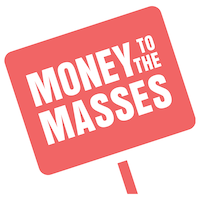
Deciding what to do with your defined contribution pension when you reach retirement age can be overwhelming. In this guide, we look at the different options available and cover everything from pension drawdown to securing a pension income for life through an annuity.
When can I access my pension?
The earliest you can access your pension is currently age 55, although this is set to rise to age 57 by 2028. Raiding your retirement fund may be tempting but you need to consider when you will stop working and whether you actually need the money. If you are going to spend another twenty years working it may be worth keeping it invested for another two decades to benefit from any stock market returns and the power of compounding. To understand more about the power of compounding, check out our podcast episode on the subject.
If you are interested in working out whether your retirement income will be sufficient, then use our pension calculator.
One important thing to bear in mind is that if you decide to access your defined contribution pension then it reduces the annual amount you are allowed to pay into pensions elsewhere. This is called the Money Purchase Annual Allowance (MPAA) and is relevant if, for example, you are planning on accessing your personal pension while continuing to work and contributing to your employer's auto-enrolment pension scheme. For more information listen to our podcast episode Costly DIY investing mistakes, pension annual allowance rules & how to check the quality of insurance products.
What are my pension options when I retire?
Defined benefit (DB) schemes (also known as final salary pensions) are pensions run by a company that pay staff a guaranteed amount based on their salary and length of service once they retire. These have proved expensive to run so many firms have closed them or scaled them back. Instead, most employees will be members of defined contribution (DC) schemes that they and their employers contribute to, which is then invested.
Everyone can take 25% of the value of their pension out as cash tax-free when they retire. There are a few options when it comes to taking this tax-free lump sum and what to do with the rest of it.
The traditional route for most retirees, who are members of defined contribution schemes, used to be taking an annuity. This is a financial product where an insurance company takes the money in your pension pot in exchange for a promise to pay a guaranteed income for life. The insurance company bases the level of guaranteed income on your lifestyle and medical history.
An alternative to purchasing an annuity was (and still is) income drawdown, which lets retirees keep their pension pot invested while still making withdrawals. Historically this was subject to certain withdrawal limits.
However, pension freedoms were introduced in 2015 by then-chancellor George Osborne to give retirees greater flexibility when accessing their pension.
Retirees can still take 25% of their pot tax-free, but now they can buy an annuity, reinvest their pension pot and take an income from it or simply make periodic withdrawals. They can even now cash in their entire pot if they wish. However, there are tax implications with each route, as shown in the table below.
The system works slightly differently for those who are retiring with defined benefit schemes. If you want to take advantage of the new pension freedoms, you would need to transfer to a DC scheme such as a self-invested personal pension (a SIPP). There are risks to this as there may be exit penalties or you could be giving up valuable pension benefits. If you have more than £30,000 in your DB pot you must seek financial advice from a regulated financial adviser to have a transfer approved. It is advisable to seek independent financial advice whatever the amount as a financial adviser can check if you would be giving up valuable benefits by moving.
Read our guides for more information:
£100 to £3,000 Pension Cashback Offer
Make a qualifying deposit or transfer a pension to our partner Interactive Investor.
- Deposit or transfer a pension of at least £10k and you could earn between £100 to £3,000 cashback
- Terms and Fees apply, Capital at risk
- New customers only
- Offer ends 31st January 2025
Before starting your transfer, check you won't lose any valuable benefits (such as guaranteed annuity rates or a lower protected pension age) and find out what exit fees you might have to pay.

Summary of your retirement options
The table below gives a summary of your options at retirement and the tax implications. We then look at each option in more detail.
| Pension options | Tax-free part | Taxable part |
| Take small cash sums | 25% of each withdrawal | 75% of each withdrawal |
| Withdraw your whole pension in one go | 25% of your whole pension pot | 75% of your whole pension pot |
| Buy an annuity | 25% of your pot before you buy an annuity | Any income from the annuity |
| Pension drawdown | 25% of your pot before you enter pension drawdown | Any income taken from your investments |
| Mix of the above | Depends on the options you mix | Depends on the options chosen |
| Leave your pension pot untouched | Your pension pot remains invested in its tax-free wrapper | Nothing taxable until you access your pension |
Take small cash sums
One of your pension choices could be to take small cash sums. This may be beneficial if you want to keep your pension invested but may have one-off expenses such as a grandchild’s wedding or to pay for a luxury holiday.
Under the UK pension withdrawal rules, each time you take cash ad-hoc out of your pension 25% of the amount will be classed as tax-free. The rest of the withdrawal will be taxed at your marginal rate.
Bear in mind some providers may charge you for withdrawals and some may not even allow it, meaning you may have to switch providers if you want to use this pension option.
There are a few downsides to taking small cash sums. You need to be comfortable with the risk that your pension pot could eventually be emptied, potentially leaving you with nothing as you get older. Additionally, you will gradually have a smaller portfolio invested and there is a risk that it could fall in value, potentially leaving you with even less income in the future. You could also be left with less capital for when you are ready to purchase an annuity or enter drawdown, which is explained later.
Another issue is that any withdrawals are added to your overall income for the tax year. This could increase your tax bill and may also affect any means-tested benefits you are entitled to as your income could end up going above the eligibility criteria.
Withdraw your entire pension in one go
Rather than making occasional withdrawals, you could close your pension and take the whole lot as cash. This is a pretty big decision, especially if you have a large amount of pension savings. You will still get the 25% tax-free lump sum, but the rest will be taxed at your marginal rate, which could leave you with a pretty big tax bill depending on the amount.
Similar to making regular withdrawals, closing your pension and taking out the whole lot would also add to your income, which could push you into a higher tax bracket and cause any benefit entitlements to stop.
Taking out cash either gradually or in one go also takes the money out of the pension tax wrapper – where gains are tax-free - so any subsequent growth in value will instead be liable to tax.
Another risk is you running out of money leaving you with insufficient funds to live on in retirement. It is best to seek financial advice to see if this still fits with your retirement planning goals and to ensure you understand any charges and consequences.
Did you know that there are many benefits you can claim while claiming your pension? For more information about benefits in retirement take a look at the MoneyHelper (formerly Pension Wise).
Buy an annuity
Annuities are a form of insurance product that effectively turns your pension pot into an income for life or a set period of time. You can still take your 25% tax-free lump sum from your pension and you then use the rest of the money you have built up to purchase an annuity. The provider will pay you an income that is calculated based on factors such as the size of your pot, age, health and lifestyle. Interest rates are also an important factor. Annuity pricing tends to follow the direction of interest rates, so if rates are low as you retire, the deals on annuity products may be uncompetitive. One of the biggest issues with annuities is that customers fail to shop around and often just move to the product their pension provider offers, which may not be the best deal on offer at the time.
Taking an annuity may not sound as exciting as accessing cash from your pension, but it provides more certainty. You are guaranteed an income over a set period, making it easier to plan for the future.
There are several different types of annuity. A single-life product just pays you an income either for life or a set period, or you could get a joint life product that lets a spouse, partner or nominated beneficiary continue receiving the payments in the event of your death.
There are fixed-term products that pay an income for a set number of years which then leaves a guaranteed sum you can use afterwards to either invest or to purchase another annuity. Retirees can also get a short-term annuity that pays for up to five years, or a guaranteed period product, which pays out for a set term even if you die during that period, with payments going to a spouse or partner instead.
Annuities can be linked to inflation and people who smoke or have medical conditions may also get higher rates with an enhanced or impaired annuity.
Annuity payments are taxed as normal income. The main downside is that this is a pretty final decision. You have 30 days to change your mind after first taking out the annuity, but once the money is gone you cannot get it back.
The general rule with annuities is that the best rates tend to be paid to those who are older or in poor health.
There are different rules regarding what happens with an annuity when you die. If you pass away before age 75 any payments within a guaranteed period or from a joint annuity can go to your beneficiary tax-free. If you die at age 75 or over, however, payments will be taxed.
Pension drawdown
If you don’t want to take an annuity but would like the benefits of staying invested while also taking money out, you could consider income drawdown. Usually investors then move their pension portfolio into assets focused on generating income, rather than growth.
Before pension freedoms were introduced in 2015, there were two types of drawdown; capped and flexible. Capped drawdown limited users to take up to 150% of the income of a healthy person of the same age, using a lifetime annuity. The other alternative was flexible drawdown, which was only available if you had a pension income of at least £12,000 a year.
Nowadays, retirees can use flexi-access drawdown. You can still take your tax-free lump sum and can then set a defined amount to withdraw or just take money as you wish while keeping some or all of the pot invested. You can also adjust the amount you take and when you take it.
Drawdown withdrawals are taxed as income, so could increase your tax bill and it could impact any benefits you get. You also have to ensure you have a financial plan so that you don’t make too many withdrawals and eventually run out of money during your retirement.
Not all pension schemes or providers offer pension drawdown so you may need to transfer to one that does. Even if your provider offers drawdown, it is important to shop around to ensure you are getting the best choice of funds and flexibility for your needs, as well as value for money in terms of costs.
If you want to find out more about pension drawdown read our article "What is pension drawdown and how does it work?". Additionally, to compare the best drawdown providers, read our article "How to compare the best drawdown providers"
Mix of options
One of the best things about pension freedom is that you don’t have to make just one choice. Although taking an annuity is pretty final, you can still plan your finances around that event. So you could start by taking your tax-free cash and then making further withdrawals if you need a bit of extra income when you first enter retirement. You could then enter drawdown at a later point if you wish and wait until you are older to turn your pot into a regular income by using an annuity.
It is important to check which options your provider offers. You can use pension pots for different parts of the pension freedoms, so you could use one to enter drawdown while taking cash out another and keeping one invested.
The downside of mixing your options is that each time you raid your pot you effectively have less to use for the next withdrawal or pension option.
Check out our podcast on tax-efficient pension withdrawals for more information.
Leave your pension pot untouched
Most people are allowed to access their pensions from age 55. There is no requirement to access your pension pot and there may actually be benefits to leaving it untouched if you can afford to. This would keep it invested, giving you more years in the stock market (or whatever investments you choose) and the potential for greater tax-free returns.
Should I get pension help or advice?
Pensions are not an easy subject to understand. Talking things through with a regulated financial adviser can ensure you have a plan to work towards so you start with the right product and make sure you understand any charges and implications and hopefully don’t run out of money. A financial adviser will have knowledge of the best pension choices and should be able to build a plan tailored to your risk profile and goals. If you do not have a financial adviser, Unbiased* offers a free pension consultation with a regulated financial adviser.
If you are financially savvy and have a good understanding of pensions, there are DIY investment platforms that will let you set up your own annuity or income drawdown plan or you can deal with your provider directly to take cash.
The government-backed Moneyhelper website (formerly Pension Wise) also provides useful guidance on your pension options when you come to retire.
Beware of pension scams
As the market for pension freedoms grows, so too does the risk of scams. The government banned cold calling about pensions in January 2019 amid warnings that people were being duped into moving their hard-earned retirement pots into unregulated schemes. There are still websites and social media groups that try to lure victims, which is why it is vital to familiarise yourself with the options and seek financial advice if you are not sure. You should check the regulatory status of any financial adviser on the Financial Services Register and remember, if an offer sounds too good to be true, it probably is.
Summary
Deciding what to do with your pension pot is likely to be one of the most important financial decisions you will make. Here is a simple summary of what we have covered in this article:
- Use our free pension calculator to work out if your retirement income will be sufficient to achieve the retirement income you want
- You can access your pension from age 55
- You can take 25% as tax-free cash
- You can take small lump sums, do a pension drawdown, buy an annuity, withdraw your whole pension pot or combine a mix of options
- You can decide to leave your pension untouched for as long as you like, meaning your pension pot has a greater opportunity to grow
- Consider speaking to a financial adviser as they have the knowledge and expertise to help you come to a decision based on your goals.
- Check out Moneyhelper, a government-backed website that summarises your pension options
- Beware of scams
If a link has an * beside it this means that it is an affiliated link. If you go via the link, Money to the Masses may receive a small fee which helps keep Money to the Masses free to use. The following link can be used if you do not wish to help Money to the Masses or take advantage of any exclusive offers - Unbiased





